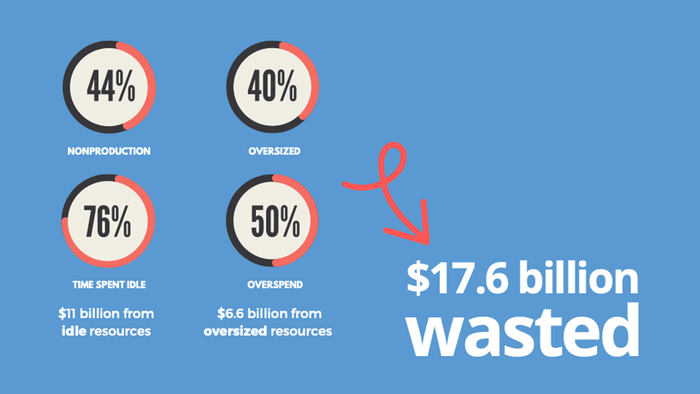The Leading Cloud Computing Challenge and How to Address ItThe Leading Cloud Computing Challenge and How to Address It
Cloud cost optimization continues to be a major issue for enterprises.
August 11, 2020

Cloud computing continues to evolve in ways that would have been considered unlikely just a few short years ago. This is especially true if, like me, you keep a keen eye on analyst reports and industry white papers.
For example, Flexera’s annual customer survey indicates a sea change in the way enterprises view cloud challenges today. Comparing the 2016 results (then under the RightScale brand name) to the 2020 results shows shifting priorities when it comes to cloud strategy. Four years ago, the number one challenge, regardless of maturity, was related to a skills/resources gap. These priorities were followed by security and compliance issues. Cost was clearly secondary and even then, only for those at a more mature level.
Fast forward to 2020 and cost management is now the number one cloud initiative in all but the most recent adopters of cloud (even among this group it comes in at number two). Interestingly, security seems to have dropped completely out of the top five. Governance remains a factor, but it too seems to be fading. Cost optimization is, by far, the main concern among companies.
What is apparent from analyst reports and from speaking with customers is that unlike migration, security, and governance, there is still much confusion among enterprises when it comes to optimization and reducing cloud waste. While there are now many tools that help make visibility and cost management easier, cloud waste is rapidly expanding as infrastructure grows.
A lot more time, effort, and money has been spent on security and governance issues. Of course, these challenges are very real and need to be dealt with. But realizing cost optimization helps free up more budget to deal with these issues.
The First Step to Cloud Cost Optimization: Eliminate Waste
Why is cloud cost optimization so important? Because a huge amount of spend is essentially waste – with no benefit to the user, and no pain when unnecessary resources are eliminated. Earlier this year, we estimated that almost $18 billion will be wasted in 2020. Most of this waste comes from two elements.
Idle resources – these are resources being paid for by the hour, minute, or second, that are not actually being used. This usually involves non-production resources provisioned for development, staging, testing, and QA, which are often only used during a 40-hour work week. Of course, these resources sit idle for 128 hours of the week but are still being billed.
Overprovisioned infrastructure — this means paying for resources that are larger in capacity than needed. About 40% of instances are oversized. Companies can reduce costs by half simply by reducing an instance by one size.
Other common sources of waste include inefficient containerization, underutilized databases, orphaned volumes, instances running on legacy resource types, and unused reserved instances.

Jay image 2.png
How to Address Cost Optimization
So, cutting waste is key to optimizing cloud costs. But how can you get everyone in an organization on the same page? The key is to adopt a self-service platform that can be easily used by all elements of the enterprise – engineers, IT, finance, DevOps, and developers, etc. Individual application owners ultimately own the costs their teams are incurring, and they need control over how their resources are managed.
Of course, cost is not the only priority of application owners who often do not have the bandwidth to evaluate solutions. Ideally, the cloud operations team will administer a platform, and have that platform enable the app owners or lines of business to act based on recommendations from that platform.
Given the current environment, we will likely experience a new wave of demand for affordable, multi-cloud tools. They will need to be implemented across engineering and operations (not just across the C-suite) to ensure the self-service nature of cloud is not disrupted. With the continuing worry about cloud cost, these tools will likely become part of day-to-day cloud operations.
About the Author
You May Also Like




